Back pain is just a symptom, an external manifestation of some disease or pathology.Any pain has a cause.There are many causes of back pain.
Patients are often told that back pain is caused by muscle and ligament strain.Unfortunately, if the cause is only in the muscles, then it will be very easy to relieve the pain.For example, a massage that should bring relief.But massage does not always help because it removes the source of the pain.
Sharp back pain can occur due to a herniated disc or disc protrusion.If the disc herniation is true, you may experience back pain on the right side, pain on the right side, or pain in the right leg (sciatica with a large hernia).If the hernia is on the left side, then you may feel pain in the back on the left side, and may be bothered by pain on the left side.
If the hernia is large and compresses the left lumbar root (RadiculitisOn the left side), then lumbago may occur in the left leg and the pain may start in the left leg.A large hernia often causes a violation of posture in the form of distortion of the body with acute "twisting" pain, when it is impossible to straighten and straighten (an intermediate position called the trunk).
Back pain in the lower right side can be the result of a problem with a hernia or with the right joint of the spine, or pathology of the sacral area (right iliosacral joint).
Pain in the area of the left shoulder blade (or pain under the left shoulder blade) can be the result of a hernia or joint pathology, or the result of a heart problem.Such pain can be caused by angina pectoris and heart attack.Pain between the shoulder blades occurs not only with pathologies of the spine and osteochondrosis, but also with diseases of the stomach (gastritis, ulcers, cancer, etc.) and often the intestines.
Cholecystitis and cholelithiasis most often cause pain in the back on the right side and pain under the right shoulder blade.Gallbladder pathology often manifests itself as pain under the right rib.Need diagnostics.
Protrusionsdisc, more often incidental findings on MRI, whichcanproceed with no pain at all.Disc herniation- Unlike the cause of severe back pain.Although, the formation of a hernia, for example, when lifting heavy objects, causes lumbar or thoracic lumbago (sharp pain in the back).In the case of persistent back pain, the hernia found on MRI may have nothing to do with it at all.The causes of persistent pain are often different. Diagnostics will help you figure it out.
Therefore, to treat back and lower back pain, you need to:
- Determine the cause of lower back pain (establish a diagnosis).
- The cause of lower back pain will be determined by a neurologist, an orthopedic traumatologist with skills in vertebrology and vertebroneurology, or a vertebrologist (vertebroneurologist).Diagnosis is established using clinical and hardware examination.
- Treatment tactics for low back pain depend on the diagnosed cause.
- If you have lower back pain, it is important to make sure that the pain does not recur.To achieve this goal, we offer a variety of methods, including physical rehabilitation of the spine.
Lower back pain.Why does my lower back hurt?
Low back pain refers to localized pain in the area between the 12th pair of ribs and the gluteal fold.This kind of pain has become a social problem.In fact, the lower back is the most loaded part of the spine, which bears the load every day and every hour.85% of people have experienced pain in the lumbar region at least once in their life.What is the reason?
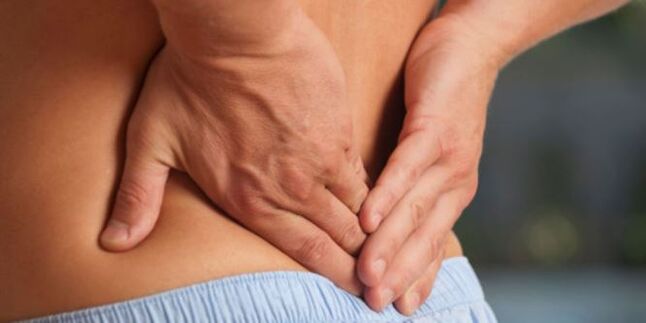
Pain in the lumbar regionmay have many reasons.The most common causes are osteochondrosis, herniated disc, radiculitis, and lumbar joint pathology.
Osteochondrosis
Osteochondrosis-Natural aging of spinal tissue.
It is generally accepted that osteochondrosis is a sign of spinal disease, which is accompanied by pain.This is a little different.
The picture below shows that a normal disk is damaged (see the damaged disk in the picture).This damage can accelerate the aging of the disc and lose its height (see "Narrowing of the intervertebral space").Next, aging begins to affect the vertebral bone tissue itself, and osteophytes grow (see "osteophytes" in the picture).
Previously, it was believed that osteochondrosis was associated with pain.Therefore, at that time they tried to explain the cause of pain in the spine and its lower part in particular with osteochondrosis.For this reason, the question of vertebroneurological failure also arises.In 1978, the first research laboratory for the problem of osteochondrosis of the spine, which was created, studied the issue of osteochondrosis for more than 10 years and proved that the cause of pain is not osteochondrosis, but joint pathology.
Osteochondrosis is not accompanied by pain because the disc does not have nerve endings.Therefore, there is no pain with osteochondrosis.

Disc herniation
Disc herniation as a possible cause of pain.The picture above shows several disc herniations - small herniations (protrusions) and large disc herniations.The herniated disc itself is not painful.
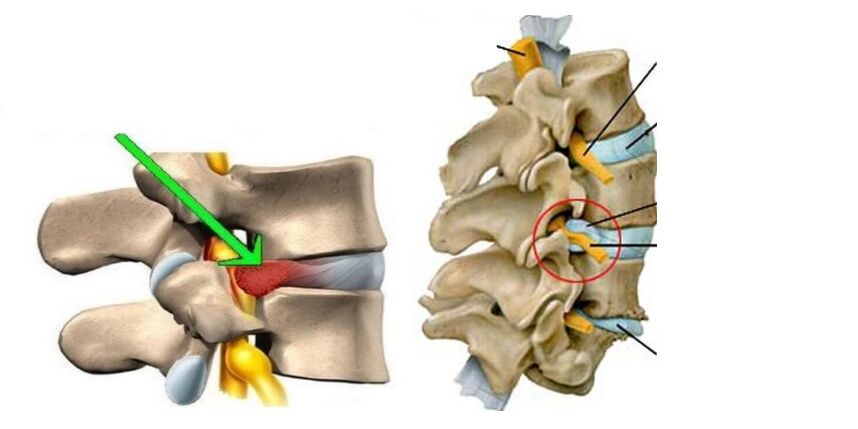
The disc has no nerve endings (uncontaminated).Pain from a herniated or bulging disc occurs when the herniated protrusion puts pressure on the isolated tissue.For example, onbackboneor onbackcrablongitudinalwowBundleon.In the first case, radicular pain occurs - radiculitis (see below).In the second, when the receptor of the posterior longitudinal ligament is pain, back pain (Lumbodynia) or acute pain - Lumbago (Lumbago) appears.

Herniated discs can often be treated without surgery.
Spondyloarthrosis
Spondyloarthrosis is arthrosis of the spinal joints.Arthritis itself is characterized by joint cartilage disease.In this case, the cartilage decreases in height (sags, "dry"), and the articular surfaces of the bones lose their protective cartilaginous layer.The joints of the spine started to hurt.This pain feels like back pain.

Radiculitis
Radiculitis is inflammation of the roots.Radiculitis most often occurs when the root is injured by a herniated disc or spinal joint.It's usually not lower back pain like pain in the legs, butt, and pain or numbness even in the toes.
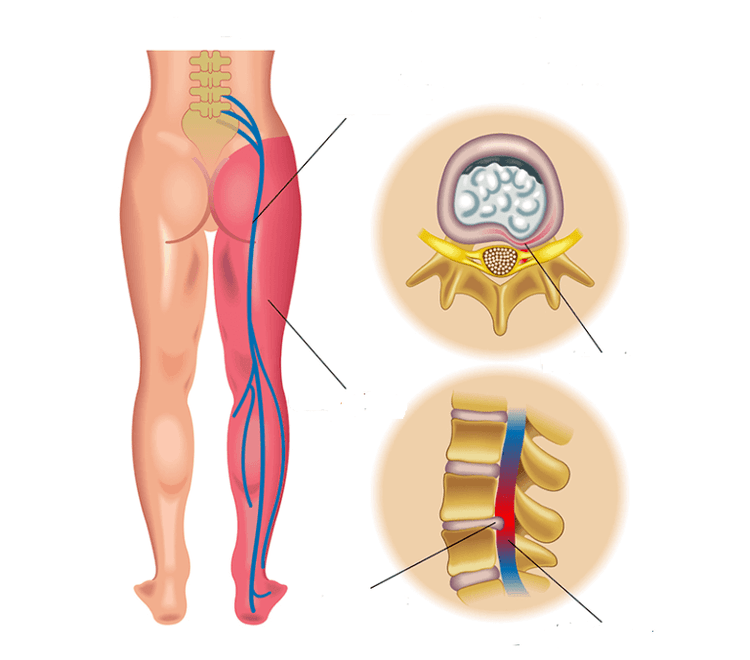
Radiculitis is most effectively treated by removing the root.If it arises because of a herniated disc, you need to reduce the hernia, which puts pressure on the root.
Pain in the back and lower part due to pathology of internal organs
Back pain may be caused by pathology of internal organs.For example,lower back pain in womenpossibly as a result of pelvic organ disease.
Lower back pain in women
Lower back pain in women can be caused by inflammatory diseases of the female genital organs.
If a woman experiences pain in the pelvis and lower part, then you should always remember about gynecology.Inflammatory diseases of the female genital organs are not common.The cause may be inflammation of the appendages, inflammatory diseases of the vagina and vulva, salpingitis, salpingoophoritis, endometritis, bacterial vaginitis, etc.
If the back pain is painful and painful and at the same time there is pain in the lower abdomen, then the woman should be examined by a gynecologist.It is important to undergo a gynecological ultrasound to clarify the diagnosis in the first place.
Constant pain in the lower back also occurs whenOncology in Gynecology.
Cancer and lower back pain in women
Cancer is painless at first.When the pain appears in the lower part or the sacral area, it may be too late.
Many people think that tumors are accompanied by pain.This is wrong.In the early stages of tumor development, a person does not feel pain.The person feels well.For example, cervical cancer is asymptomatic in the genital organs.It begins to show itself when the tumor grows.In this case, pain often appears in the lower back and under the lower back.The pain under the lower back is in the sacrum area.
With cancer, severe pain in the lower back does not bother you at first.On the other hand, the lower back does not hurt, but it hurts.Such pain can be the first call that will help women prevent the critical growth of tumors and make the correct diagnosis in time.If the lower back or sacrum continues to hurt, you should pay special attention to this so as not to miss the catastrophe.
Unfortunately, if you do not pay attention to pain or discomfort in the lower part, the next sign of cervical cancer may be uterine bleeding.This is the stage where the tumor begins to disintegrate, when there may be metastases.Including in the spine, when there is severe pain in the lower part.
Important takeaways:If your lower back hurts, it's not necessarily osteochondrosis or a herniated disc.And it never hurts to have a preventive consultation with a gynecologist.After all, cervical erosion detected during the examination is a premature condition.
Why does my back hurt due to urological or urogenital problems (inflammation)?
Acute lower back pain may be caused by kidney disease
The lower back hurts with kidney disease such as pyelonephritis.
Pyelonephritis is an infectious disease, most often caused by an ascending infection.It may be related to both sexually transmitted infections and other types of household infections transmitted through swimming pools, bathrooms, and personal hygiene items.For example, everything lives in towels that have not been washed for a long time.
Inflammation activates pain receptors in the soft tissues of the pelvic organs.Pain signals (impulses) reach the spine through sensitive roots, activating the tissue.The soft tissues of the spine and the point of attachment of the back muscles swell (burn) reflexively.And my lower back started to hurt.
Back pain and persistent back pain due to dysfunction and other diseases of the gastrointestinal tract
With intestinal spasms, with flatulence, with ulcers or ulcerative colitis, with stomach ulcers and gastritis, the back usually hurts.
Stomach cancer associated with back pain
Back treatment for pain caused by pathology of the gastrointestinal tract will not improve.The cause needs to be treated.
Another possible cause of lower back pain is back strain
Excessive load on the lower part is the cause of back pain or its severity.The load often affects the back joints, back ligaments, tendons or muscles.In addition, the muscles in the lower part work actively under the load.Therefore, if you experience pain in the spine in the lumbar region after exercise, it is not necessarily a disease.It could be a muscle tear.If this pain does not go away within 1-2 days, then you should think about a problem with the lumbar spine.Especially if this pain worsens with movement.
The causes of such pain are often too much inflammation of the muscles and their attachments.Or - inflammation of the joint capsule.
If such suppression occurs more than once a year, you should look for the cause of the severity.To do this, it is not enough just to consult a doctor and carry out manipulations, take painkillers, massage and other procedures.
Examination is needed to determine the cause of frequent enlargement.
Soft tissue injuries in the lower back
Sharp pain in the lower part when moving awkwardly or when lifting something heavy is most likely a spinal injury.
If you are concerned about pain on that side, for example, pain in the lower part on the right side, then you should think about the pathology of the joint located on the right side.Or about the right hernia of the lumbar spine.
Types of lower back pain
Pain, taking into account the duration, can be acute, chronic, or have a transient (passing) character.
The pain is as follows:
- Local pain- Pain exclusively in the lower part.
- Referred pain- When the pain occurs not only in the lower back, but for example in the back, in the pelvic area.Or, internal organ pathology causes pain in the lower back.In such cases they talk about the referred pain.
- Radicular pain- differs in significant intensity, and is localized within the boundaries of root preservation (from the spine to the edge).The cause is a violation (stretching, compression, curvature, compression) of the nerve root of the spinal nerve.Mobility or coughing increases the pain because of the so-calledcough urge.This is a severe pain in the lower back that can shoot (radiate) into the leg.
- Myofascial pain- is the result of reflex muscle spasms.The cause of myofascial pain can be diseases of internal organs, or damage to the spine itself.Muscle spasms significantly disrupt the biomechanics of human movement.Chronic muscle spasms can also cause painful and brutal lumbar pain.
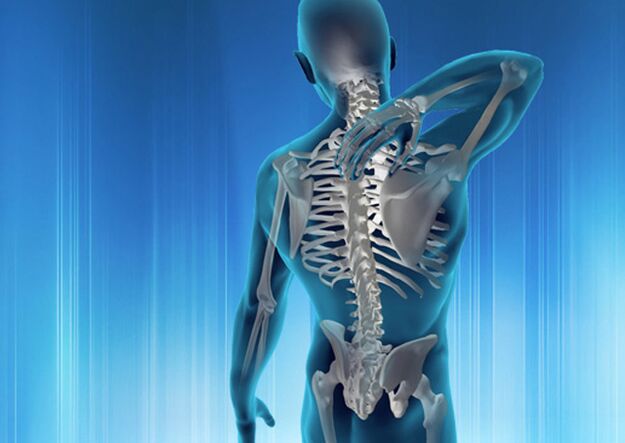
In what case should you consult a doctor for back pain and what to do?
- with sharp pain (acute) in the lumbar region;
- If pain in the back or lower back persists for more than 3 days;
- if back pain appears after an injury;
- If the pain is localized simultaneously in the lower part, legs and lower legs;
- If pain in the lumbar region is combined with numbness in the thighs, buttocks, legs, feet, groin;
- if pain in the lumbar region is accompanied by twitching (fasciculations) of the muscles of the limbs;
- If the function of urination and urination is affected (urinary retention, incontinence, frequent urination or false urge to urinate);
- If the perineum is numb.
- If the pain in the back or lower part (sacrum) remains, it is worse in the morning
What to do if you have lower back pain?
The causes of low back pain are varied, therefore the treatment of low back pain should be done only after diagnosis and after the diagnosis has been made by a qualified doctor.Any pain in the vertebral area requires a medical examination and an explanation of the cause of its occurrence.
A visit to the doctor has 3 objectives:
- Establish the correct diagnosis.
- Relieves pain.
- Formulating measures that will help maintain the patient's health so that the pain does not recur.
Possible causes of lower back pain
The following diseases may be the cause of your pain in the lower back:
- osteochondrosis;
- Osteoarthritis;
- Spondylolisthesis;
- spondylosis;
- Ankylosing spondylitis;
- Spondyloarthropathy;
- muscle damage;
- Ligament damage;
- Disc herniation "Herniadisc is treated without surgery in 98% of cases (world statistics) ";
- atherosclerosis of the abdominal aorta;
- malignant neoplasm of the spine;
- metastases to the spine;
- Urinary tract infection;
- Spinal stenosis;
- Diseases of the biliary tract;
- penetrating duodenal ulcer;
- pancreatitis;
- Kidney disease;
- Eliminate abdominal aortic aneurysm;
- bleeding into the retroperitoneal tissue;
- Inflammatory diseases of the female genital organs;
- oncological diseases of the female genital organs;
- endometriosis;
- prostatitis;
- Prostate cancer;
- epithelial coccygeal duct abscess;
- lower leg arterial embolism;
- intermittent claudication;
- Pseudo-intermittent claudication;
- destroy atherosclerosis of the vessels in the lower part of the legs;
- Rheumatoid spondylitis;
- Polymyalgia rheumatica;
- Fibromyalgia
- depression;
- the other.
Treatment of back pain (back pain)
At the initial stage of treatment with pain in the lower part (back), the main diagnosis is established.This is done based on a survey, medical history, neurological and orthopedic examination.At this stage, medications can be prescribed to reduce pain, relieve tissue swelling, and general anti-inflammatory therapy.Reflexology, local medicinal effects, regional anesthesia, various injection methods to treat low back pain, laser therapy, etc. are effective.In the acute and subacute period, rest is important during drug therapy.Physiotherapy, massage, manual therapy, which can worsen the process, are not indicated.In the acute period, traction is also not used: hardware, on inclined boards, on wall bars.
To treat back pain more effectively, you need to understand its cause.For this purpose, the patient is further examined to clarify the diagnosis.There are many causes of pain in the lumbar region.The list of disease indicators accompanied by lower back pain is listed above.Each of them has its own treatment protocol with a list of the most effective approaches, drugs and procedures.This protocol also contains data on methods that are not indicated for this disease.For example, for inflammatory diseases of the spine (spondylitis, spondyloarthropathy, spondyloarthritis, myositis, ligamentitis, etc.), manual therapy, massage, and physiotherapy are not indicated due to non-compliance and the risk of complications.It is necessary to identify the cause of inflammation and treat it.
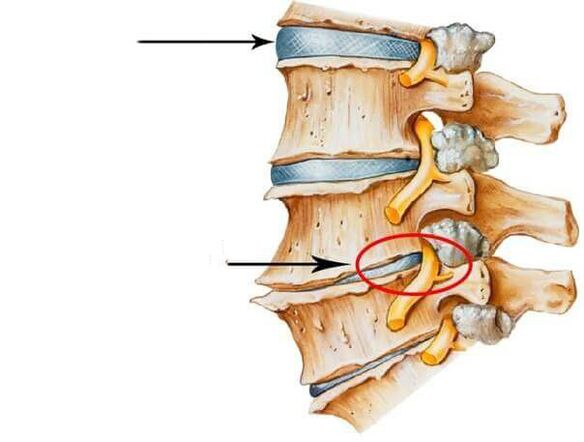
Radiographically visible spondylosis can occur without clinical symptoms and often masks a more complex disease.Therefore, treating spondylosis is useless and often dangerous: it is unrealistic to remove bone growth in the spine, and there is no need.Patients may face exotic diagnoses such as "muscle damage", "muscle spasm", "ligament damage".Unfortunately, talking about muscle spasms as the cause of pain is not always true.Muscle spasm of the paravertebral muscles is a reflex action and, as a rule, accompanies most diseases, including those not related to the spine.The muscles are actively involved in the segmental reflex process and can respond to any irritation in the spine and outside it."" Cramps "" called "called" called "called" called "called" called "called" called "called" called "called" which can be caused by pathology of internal organs: diseases of pelvic organs, reterperitoneal space, kidney, pancreas and prostate gland, gynecological diseases and above.Osteopathic techniques for working with secondary spasmodic paravertebral muscles can, on a reflex level, temporarily alleviate the condition.Manual therapy, osteopathic techniques, inclined boards, massage, traction, physiotherapy, for example, will not help prostatitis or adenomatosis.The so-called "therapeutic removal"."Muscle spasm" in this case is just the desire of the manipulator.
Treatment of hernias and disc protrusions in the lower back
Often, an MRI reveals a hernia or protrusion, which is interpreted as the cause of lower back pain.The question arises: Remove the hernia or try to cope without surgery?
The first thing to do- Explain how clinically significant this hernia is.The fact is that if you take 100 healthy people without back pain and do an MRI diagnosis, it turns out that 80% of them have some kind of disc herniation ("hernia"), which does not give symptoms.
Often, disc herniation can be an accidental discovery, which is often associated with other causes of pain.
At the same time, practice shows that not all hernias are clinically significant.To clarify the causes of pain, a comprehensive medical history is taken, a neurological examination is performed to identify neurological deficits, the function of the pelvic organs is explained, etc.
It turns out that not all hernias and disc protrusions need to be treated.Patients who need such an operation are no more than 2%.
Neurosurgeons have established absolute indications for surgery, which are clearly defined.More often than not, the presence of a herniated disc is not a reason for emergency surgery.
There are sufficient weapons for the treatment of disc herniations and protrusions, including traction, formation of stable motor patterns on the back, local and general drug therapy methods, physiotherapy, reflexology, etc.

When making a decision about surgery, one must take into account the relative indications for surgical treatment, which are officially set by the neurosurgeon.Each specific case is considered separately, taking into account clinical symptoms, medical history, anamnesis, neurological and orthopedic examination, hardware and laboratory examination results.
It should be noted that surgical intervention is often associated with a number of complications, which after surgery need to be dealt with many times more diligently than pain relief before surgery.
Degenerative changes in the spine, such as osteochondrosis, spondyloarthrosis, spondylosis, etc., are treated based on identifying the trigger of the pain syndrome.
Massage and manual therapy are relatively effective treatment methods if there are indications for their use.Over the past three decades, the Institute has developed optimal protocols for the management of patients with low back pain, taking into account possible causes.

















































